The northern route finishes in the municipality of Agaete, an eminently coastal locality situated 30 kilometres from the capital. This marine municipality's town centre is found 43 metres above sea-level. The topography of Agaete is, in general, very abrupt. From this locality three main basins stand out: El Risco, Guayedra and Agaete. The municipality reaches a maximum altitude of 1,180 metres in the mountainous zone of the Pinar de Tamadaba (the Tamadaba Pine Tree Reserve).
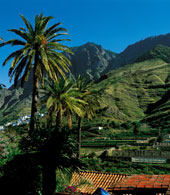
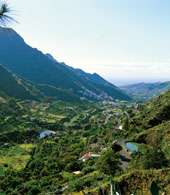
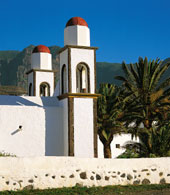
In Agaete where there are examples of all cultural signs, we find one of the most important tumulus necropolises of the island: the Necropolis of Maipés, a future Archaeological Park.
Located in the historic quarter of Agaete is La Concepción Church, which replaced the primitive hermitage (1515). One must also highlight the Cultural Centre of the Municipality and the Town Hall, which are large XIX century houses that mirror the traditional architecture of the time.
Agaete also has green areas of special relevance: El Huerto de las Flores and Tamadaba Natural Park. The former is a botanic garden situated in the municipal town and contains a great variety of exotic plant species. Public opening times: Tuesdays to Fridays from 09:00 to 17:00 hours; Saturdays from 09:00 to 14:30 hours.

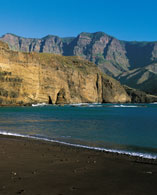
The Tamadaba Natural Park is a protected space which contains the biggest pine area on the island of Gran Canaria. The mountain mass descends the steep sloping mountain side, embedded ravines and abrupt cliffs, towards the sea , creating a landscape of great beauty where the impressive Roque Faneque with its 1,008 metre vertical fall to the sea, stands out. The Roque is considered one of the highest active cliffs in the world. On top of the massif, around 1,000 metres above sea level, there appears a flat surface occupied by a dense forest of Canarian pine.
From the Valley of Agaete, outstanding for its singular beauty and its tropical fruit and orange orchards, together with its coffee plantations, one can view the striking mountain range of Tamadaba with its thick pine forests. Apart from the great beauty of the Valle de Agaete, one can enjoy the traditional constructions which are used for rural tourism in the area, promoting the practise of trekking in the municipality.
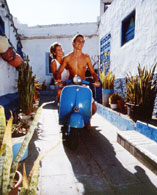
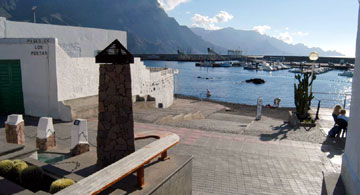
The Port of Las Nieves is in the coastal area of the municipality. Here you will find the Hermitage and Triptych of Nuestra Señora de las Nieves, the latter of which was attributed to the XVI century Flemish painter Joos Van Cleve. In the Port of Las Nieves one can appreciate the Roque Partido (Broken Rock) or Dedo de Dios (God’s Finger), a symbol for the people of Gran Canarian. The Roque Partido is a rocky formation that as a result of erosion took the shape of a fist.
Agaete also has some of the most popular natural pools and beaches of the northern part of the island. The most visited of which is Las Nieves Beach, with its calm waters and great fishing atmosphere full of restaurants that offer the best gastronomy of the place, as well as its picturesque maritime walk.
For more tourist information on the municipality, Agaete has a Tourist Information Office situated in the Puerto de Las Nieves.